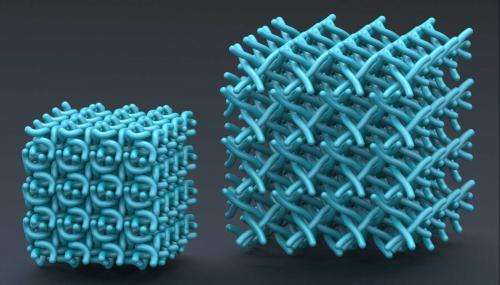Proteins snap those wrinkly fingers back into shape

You know how your fingers wrinkle up in the bath? The outer layer of your skin absorbs water and swells up, forming ridges – but quickly returns to its old state when dry. Two physicists, Professor Roland Roth of Tübingen University and Dr. Myfanwy Evans at Erlangen University have shown just why skin has this remarkable ability. Their conclusions were published recently in the journal Physical Review Letters.
The swelling and absorption of water occur in the outermost skin layer, which is made of dead cells that are stacked in layers like bricks. These cells are filled with a network of filaments made of the protein keratin. These keratin strands interlock to form a three-dimensional lattice – which can increase its volume by five times when the strands stretch out.
Evans and Roth have shown how the structure could help skin cells swell and shrink. They developed a model describing how the system's energy varies as the network's spacing changes. The researchers first calculated the filaments' willingness to absorb water and found that this energy decreases, meaning that the structure is inclined to expand and absorb water.
But they thought some other force must act to reverse the system's expansion, since the process reverses easily in real cells. Inspired by previous filament elasticity measurements, they realized that the tension in a stretched filament could provide the counteracting force. As with a spring, the more you stretch a filament, the larger the elastic energy.
The interplay of these opposing forces ensures that the skin can only absorb a certain amount of water, moving between two extreme states limited by the skin's physical structure. The researchers conclude that the keratin filaments' geometry must be crucial to skin's response to water because it keeps the system in an energy range that enables but also curbs expansion.
Evans and Roth's study could help to treat a number of skin disorders, and to create materials with skin's remarkable properties.
More information: "Shaping the Skin: The Interplay of Mesoscale Geometry and Corneocyte Swelling." Myfanwy E. Evans and Roland Roth, Phys. Rev. Lett. 112, 038102 (2014), Published January 24, 2014
Journal information: Physical Review Letters
Provided by Universitaet Tübingen




















